"Such a wonderful place... everything you expect a castle to have"
Research for Murder On The White Cliffs
At the beginning of my next novel, Murder On The White Cliffs, Marjorie is given the huge responsibility of choosing a seaside destination for Mrs Jameson’s trip to the coast. As Marjorie knows, few things were (are?) more revealing of social class in Britain than where you take your holidays.
She comes down to two choices, both blessed with sandy beaches and easy transport to London. There’s Margate, which even in the 1920s had ‘kiss me quick’ associations with cheap and cheerful entertainment, questionable behaviour and working class culture. Or there’s Broadstairs, with its literary associations (Charles Dickens was a big fan), quaint harbour and genteel tea rooms.
Marjorie dips into the Rough Guides of the day, the Ward Lock & Co Pictorial and Descriptive Guides. These distinctive red-covered books covered Britain as well as continental Europe, with an emphasis on ‘travel practicalities’ such as the railway or steamer from London, ease of hiring bath chairs and boats, local churches and other amenities.
But I already had a hotel in mind. I had seen the imposing Kingsgate Castle on clifftop walks between the two seaside towns. About halfway between Broadstairs and Margate, it would give me the opportunity to contrast the genteel and raucous side of the English seaside. Kingsgate itself has a long history as a smuggler’s haunt, and was given its royal appellation by Charles II, who supposedly made an emergency landing there during a storm in the channel, while en route to Dover.
The crenellated and towered edifice was built in the seventeenth century as a rather large folly, one of a number in the area built for the eccentric Henry Fox, later Lord Holland. It originally provided stabling and staff accommodation (and enhanced the view) for Holland House, the mansion Fox had built in the bay.
The castle was later owned by the media mogul Lord Northcliffe (giving an inadvertent link to my previous Marjorie Swallow mystery, Death On Fleet Street) where he entertained friends and made part of the grounds into the North Foreland golf course.
In 1923 the castle was bought by a local hotelier and turned into a smart hotel. It’s still there, although now divided into the inevitable luxury flats. But the secluded cliff-top location and tunnel down to the beach made the hotel pretty irresistible as a setting for a 1920s murder mystery.
Advertisements in The Gentlewoman magazine make clear that the aim was for an upmarket, sporting clientele with a penchant for golf and tennis. It attracted a theatrical crowd, including the actors John Mills and Peggy Ashcroft.
However, a rather lurid story carried in all the newspapers of 1924 showed a different side to the guests at the Kingsgate Castle. Captain Seymour, a retired Indian Army officer, was charged with committing grievous bodily harm on a fellow-guest after an evening game of bridge got a little too heated.
According to the Daily Express, “It was stated that during a private bridge party Mr. Kerman wished to leave, and said that the game was monotonous. Captain Seymour asked him to go outside. Criticisms had been passed during the play, and afterwards Captain Seymour attacked Mr. Kerman… A detective sergeant said that Captain Seymour said when arrested : ‘I can tell you this, that he will get another socking from me when this is all over.’”
Naturally, I squirrelled this away for use at a crucial point of my story.
My favourite description of the hotel, however, comes from the pages of Signpost, by WG McMinnies, a 1930s ‘independent guide to pleasant ports of call’. It’s rather a good publication, with personal accounts of visits to each of the restaurants, hotels and inns listed, as well as maps and a key to the facilities on offer.
Mr McMinnies reports of Kingsgate Castle:
“This is such a wonderful place that it's difficult to know where to start. It's got everything that you expect a castle to have - turrets, battlements, towers, a fierce-looking portcullis leading into a most charming paved courtyard. And last, a remarkable position on top of the white cliffs of north foreland. Indeed you can have tea or a cocktail on the terrace on this side of the castle, pitching your cherry stones straight into the sea… My general impression was of extreme comfort combined with a certain air of friendliness.”
Exactly the sort of place to test the staff’s friendliness with a murder or two.
Naturally, I looked up WG McMinnies. Major McMinnies was an RAF officer during the first world war, and also wrote a 1918 book, Practical Flying, before setting off around Britain to write his guides. I’m rather tempted to write a book about the flying major!
A curious footnote that I discovered while writing Murder On The White Cliffs is that the iron staircase down to the beach from Kingsgate Castle may have been the inspiration for John Buchan’s classic 1915 spy novel The 39 Steps. There are almost as many theories about the book’s inspiration as there are steps, but hear me out!
Buchan wrote the book in St Cuby’s, a house near Broadstairs, and the steps to the beach from that house are commonly thought to be the inspiration. However, writing in his fascinating blog Secrets of Kingsgate Castle, former castle resident David Evans writes: “For starters, the Castle stairs – unlike those at St Cuby’s – were clearly visible from the cliffs as described in the book and, from the beach, led up to a metal door in the cliff-face behind which was another staircase that spiralled up through the chalk into the bowels of the building. The external staircase is no longer there, but photos show it to have been welded from three sections and the individual steps may have well numbered 39… Kingsgate Bay, with its remote sandy beach, would have been an ideal place for a boat to moor in at high tide, unlike the more rocky beach beneath St Cuby’s.”
There’s another link. “At one point, before his death, Scudder [a character in The 39 Steps] disguises himself as a certain ‘Captain Digby’ – the name of the pub that stood then, as it does now, directly opposite Kingsgate Castle, and which Buchan doubtless patronised while staying nearby.”
I love the idea that John Buchan was inspired by Kingsgate Castle and the Captain Digby pub, both of which feature in Murder On the White Cliffs. Captain Robert Digby was the nephew of Lord Holland, a captain in the English navy. The Captain Digby was built as another of Lord Holland’s follies, and also looks like a mini-castle. Its beer garden has the best view of any pub in Kent.
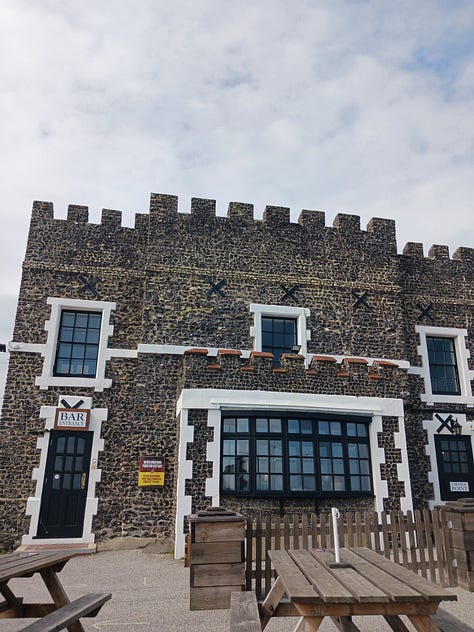
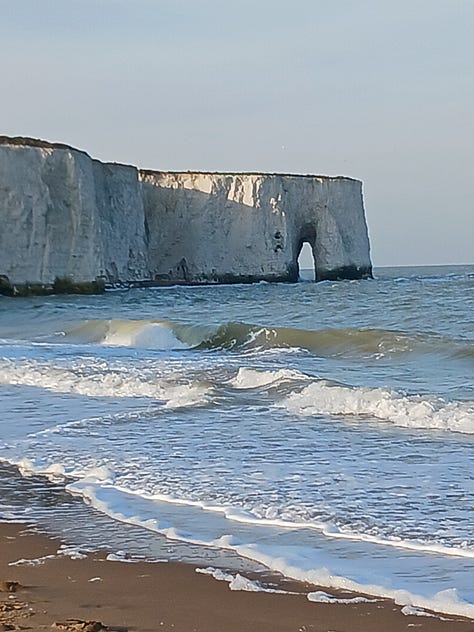
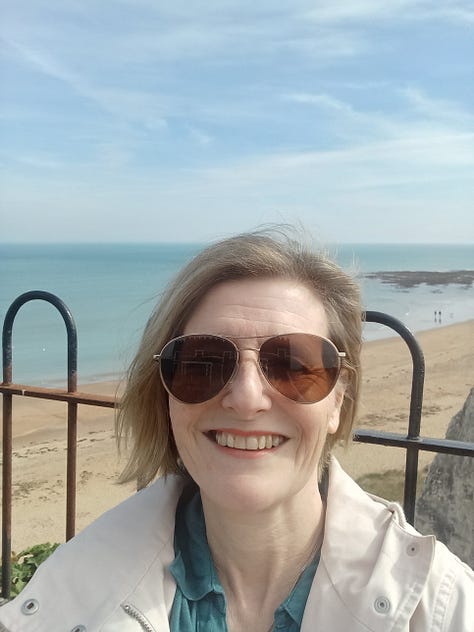
Incidentally, Charles Dickens’s holidays in Broadstairs sound fun. There are accounts in his letters of swimming, walks on the cliffs towards Ramsgate, boat trips from the pier, regattas, and dancing at the Tivoli Gardens. Not only that, but he seems to have popped over to Margate when he wanted to misbehave. A letter to his friend Maclise includes the ambiguous words: “There are conveniences of all kinds at Margate (do you take me?) and I know where they live.” Yes Charles, we take you.
Next time, I’ll take a look at some of the attractions in 1920s Margate, where Marjorie and her friend Frankie spot some bad behaviour in the Dreamland tea gardens…
Thank you for reading. If you enjoyed this post, please do give it a ‘heart’ and consider sharing or re-stacking, to help others find my writing.


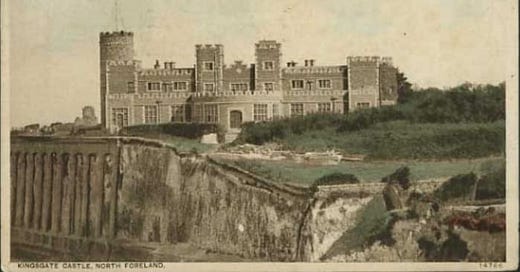




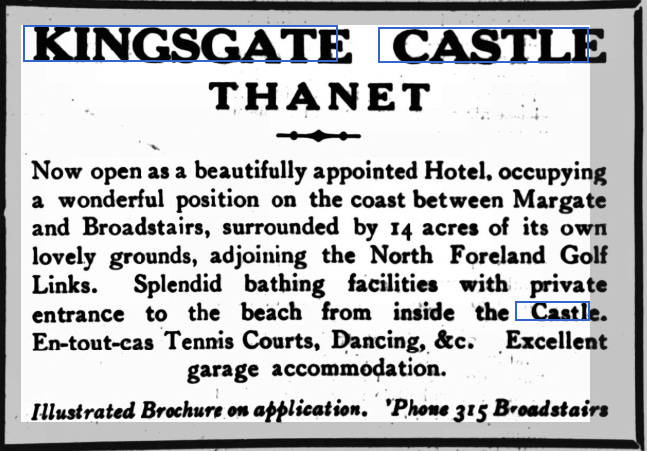
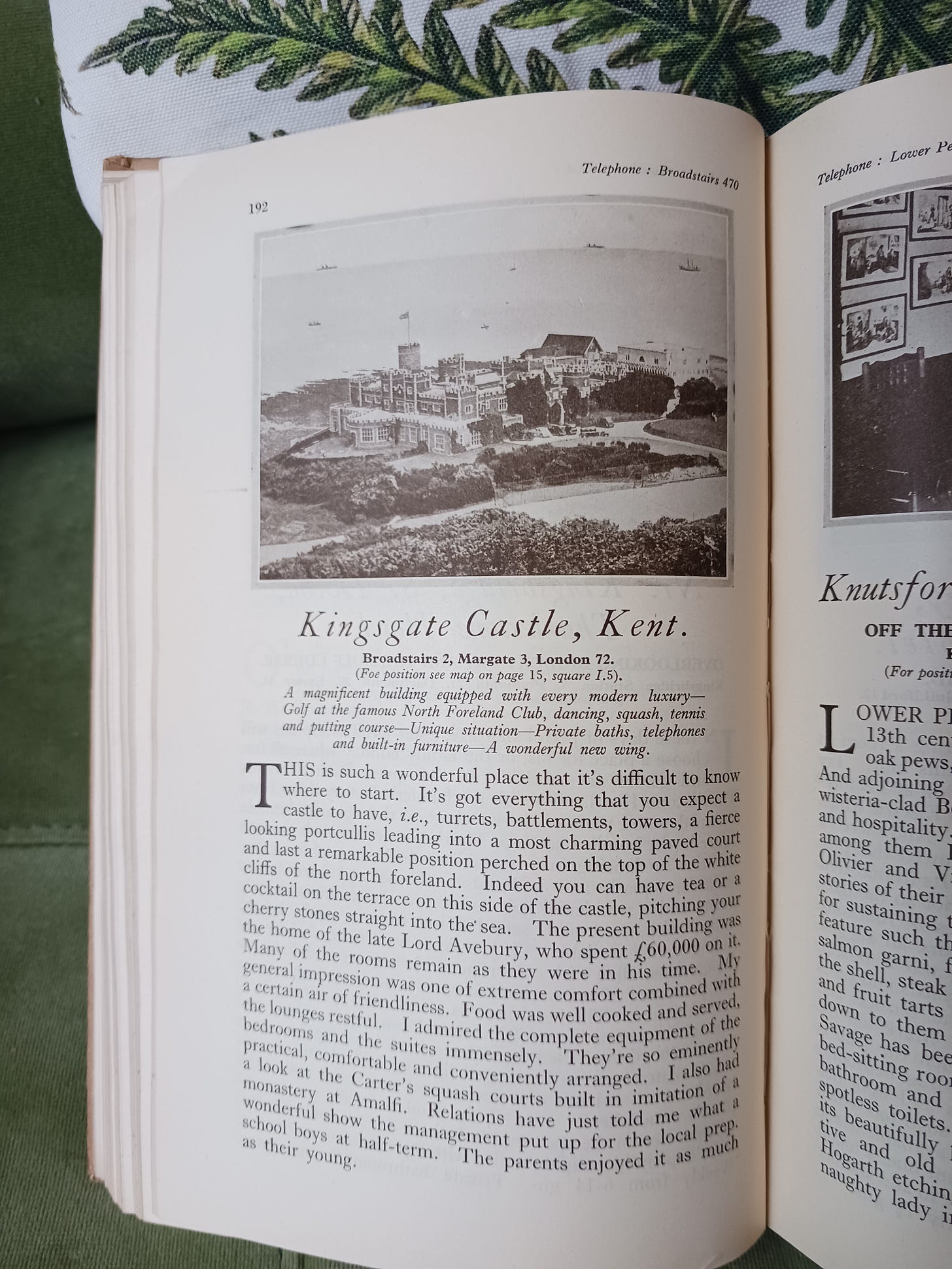

Thanks, Anna, for this very interesting account of your research. The novel sounds terrific.
The connection with Lord Northcliffe with the hotel is interesting. As I am sure you know, he was a notorious propagandist during the First World War, to the dismay of thinking people (not least Virginia Woolf) at the time. Peter Buitenhuis, The Great War of Words (1989) is very good on Northcliffe and other propagandists. (Possibly not relevant to your research! But generally interesting, I think.) People were quite mistrustful of The Times after the FWW.
Thanks, Anna. Fascinating to learn the facts behind the fiction. Really looking forward to this next book of Marjorie’s adventures. You seem to really be on a roll with her now.